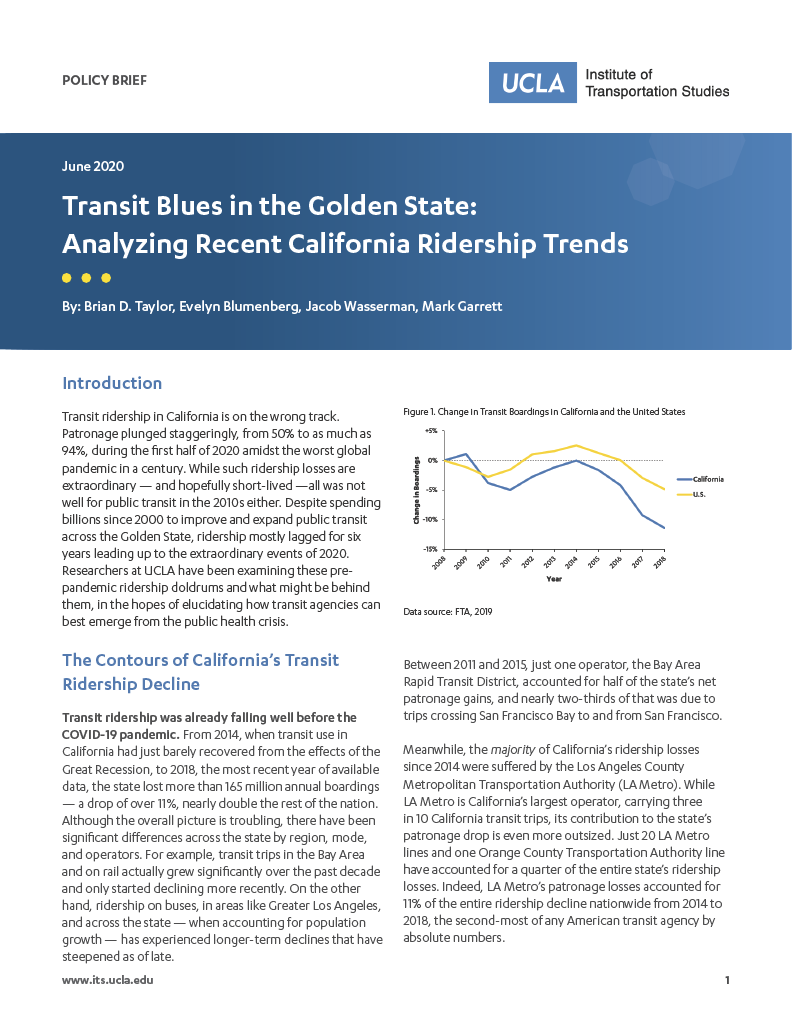Date: June 29, 2020
Author(s): Brian D. Taylor, Evelyn Blumenberg, Jacob L. Wasserman, Mark Garrett
Abstract
Ridership has been declining in California even before the COVID-19 Pandemic. This study identifies the causes of this decline, which is occurring even as billions of dollars are being spent in expanding transit. The Los Angeles region accounted for the majority of California’s losses in 2014. More recently, the Bay Area has been experiencing ridership declines as well. Transit in California has been increasing its service, but transit efficiency and performance has been decreasing. The largest factor in California’s ridership decline is likely associated with the surge in private vehicle sales between 2010 and 2018. Other factors involved the decline in ridership from traditionally frequent users such as Asians and Hispanics and the shift in residential developments away from major city centers.
About the Project
From 2014 to 2018, California lost more than 165 million annual boardings, a drop of over 11%. This project examines public transit in California in the 2010s and the factors behind its falling ridership. Transit ridership has been on a longer-term decline in regions like Greater Los Angeles and on buses, while ridership losses in the Bay Area are more recent. While overall transit boardings across the state are down since 2014, worrisome underlying trends date back earlier as patronage failed to keep up with population growth. But reduced transit service is not responsible for ridership losses, as falling transit ridership occurred at the same time as operators instead increased their levels of transit service. What factors help to explain losses in transit ridership? Increased access to automobiles explains much, if not most, of declining transit use. Private vehicle access has increased significantly in California and, outside of the Bay Area, is likely the biggest single cause of falling transit ridership. Additionally, new ride-hail services such as Lyft and Uber allow travelers to purchase automobility one trip at a time and likely serve as a substitute for at least some transit trips. Finally, neighborhoods are changing in ways that do not bode well for public transit. Households are increasingly locating in outlying areas where they experience longer commutes and less transit access to employment. At the same time, a smaller share of high-propensity transit users now live in the state’s most transit-friendly neighborhoods.


